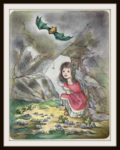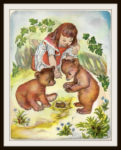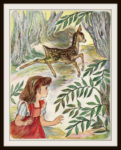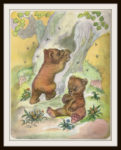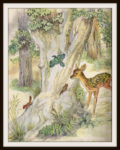One of the wonderful things about knowing a host of folks in the beaver world is that sometimes unexpected beaver efforts cross your path, like this effort from Dr. Connie Gunderson in Cotton Minnesota. She had been working with Mike Callahan of beaver solutions to teach her city about flow devices, after a lodge she had been watching was destroyed by vandals.
 Connie is an assistant professor of Social Work at the College of St, Scholastica in Duluth. Some ofher students had started an indivual project that working to change folks minds about beavers using Relational Cultural Theory (RCT). Her student wrote
Connie is an assistant professor of Social Work at the College of St, Scholastica in Duluth. Some ofher students had started an indivual project that working to change folks minds about beavers using Relational Cultural Theory (RCT). Her student wrote
An independent project for our relational cultural theory (RCT) class. This theory focus is on growth fostering relationships and building connections. The beaver project called supporting the eco-engineers is about trying to foster connections by creating awareness of the beavers, their importance to the environment an alternative means of co-existing without the means of killing.
And here I was just trying to change folks minds and not getting any college credit at all! What was I thinking? Anyway, Dr. Gunderson published a poem with her niece Taylor Gunderson after the damage to the lodge that I thought you all would enjoy so I’m sharing it here. Get a second cup of coffee and settle in for a cozy read.
Our story began on one day last spring.
Bears woke from their slumber. Fawns blinked their eyes.
Bees busily buzzed. Loons began to sing.
Frogs croaked. The blue sky danced with dragonflies.
Then, three newborn beaver kits waddled out
from their sheltered home on Amikwiish Lake.
At their parents’ nudge, they explored about,
gaining courage with each step they would take.
Each morning, we worked and nurtured the land.
I dug in the dirt, giving seeds a home.
An elder came by to give us a hand.
We built nature trails to wander and roam.
Each day, the beavers worked with the earth.
They helped to build canals, marshes, and bogs.
The kits quickly learned how to mend their hearth,
cleverly using bark, branches, and logs.
Auntie and I walked in the autumn wood
Beneath falling leaves of browns, golds, and reds.
We gathered twigs and logs for firewood,
so we could stay warm in our winter beds.
Across the lake, beavers, too, gathered trees.
And as the days grew short they worked harder.
They chewed and dragged fresh branches with leaves, then they
pulled the wood into their larder.
Outside, the wind blew. The lake was snow-swept.
In the cabin, we were warm with our quilt.
We spoke of the beavers before we slept.
Auntie said, “Remember the lodge they built?
They are safe, snuggling under the ground.
And, the beaver family isn’t alone.
Beavers are gracious. They share what they found.
They welcome mice, bugs, and frogs in their home.”
 The frigid winter thawed to good weather.
The frigid winter thawed to good weather.
“Let’s wash the windows!” I said with a grin.
Auntie and I sang and scrubbed together,
cleaning the cabin outside and within.
At the winter’s end, out came the beavers.
Like us, they fixed up their home on the lake.
They also worked as waterway builders,
making dams with the branches they would take.
I happ’ly splashed in the water all day.
A dragon y landed on my wet nose.
“Hey, look how me and Miss Dragonfly play!”
Auntie laughed, as we quickly struck a pose.
The kits swam and dove under the water.
They laid on their backs and looked at the sky.
They rolled around and played with an otter,
then rubbed noses before saying goodbye.
One night, we heard a loud and scary sound.
The next morning, we saw a horrid sight.
The lodge was destroyed, no life to be found.
The beavers were gone. We felt shock and fright.
We sat in silence with sad falling tears.
We searched for words, but our voices were lost.
Our hearts were broken, minds clouding with fears.
The vandals were wrong, yet who paid the cost?
In my worried dreams, I heard beavers cry.
I tossed and turned in the dark of the night.
Could the beavers rebuild? They had to try.
In my dream, I stepped out into moonlight.
I saw the beavers from the sandy shore,
and as I watched them work, my eyes went wide.
Where there had once been five, now there were four.
One small beaver was gone. One kit had died.
When she saw the lodge’s ruins after she woke,
the elder felt and shared in our distress.
As she folded her aging hands, she spoke.
Our grieved hearts calmed at her voice’s caress
For us, the beavers are central to life.
Their hard work gives us water we need.
In the past, beavers have overcome strife.
Only time will tell how their lives proceed.
A blizzard hit. We were safe from the cold.
But, would the beavers’ marred lodge keep them warm?
Across the lake’s frozen surface we strode,
seeking to know if they survived the storm.
On the lodge a beaver stood ’neath the sky.
As he watched us, I saw how he had thinned.
Our eyes met. He breathed deeply, as did I,
our breath turned into ice mist in the wind.
As nature’s flowers took breaths of fresh air,
the elder visited, bearing a gift:
A freshly gnawed birch stick, handled with care.
She had found it as it floated adrift.
We saw beavers toil in falling spring rain.
They gathered food as the flora regrew.
They worked together and lived through the pain,
knowing that nature would bring life anew.
We are connected, all life big and small.
We walk and swim and fly beneath the sun,
sharing this earth, which belongs to us all.
We can’t erase the marks of past harms done
But, like the beavers, from loss may we rise,
and venture forth to live another day
with resilience and love in our eyes.
As we paddled back, I heard myself say, …
“I think we should tell the beavers’ story.”
We nodded: “Yes, it’s something we should share.”
As we glided on the lake peacefully,
we hoped people would pause, listen, and care.
Published in:
Gunderson, C., Graff, D., Craddock, K. (2018). Transforming community: Stories of connection through the lens of Relational-Cultural theory. Duluth, MN: WholePerson Publishing
CONNIE GUNDERSON, “AUNTIE” AND
TAYLOR GUNDERSON, “NIECE”
ARTWORK BY CARL GAWBOY
Amikwiish is based on an Ojibwe word meaning appropriately “Animal lodge in the water“. Thank you so much for sharing this touching story and giving us this wonderful word!. I can’t wait to hear about all the hearts and minds you change with RCT in the days and weeks ahead!
 Amelia Hunter is the Martinez artist who has generously donated her talent for the past seven beaver festivals. She has been hard at work on the new poster for the next. It has the hugely hard job of announcing our new location. I know it seems like summer is miles away but the artwork for our Bay Nature ad in the April issue is due mid February. Plus we want to get ready for the banners in the park to take advantage of the new venue,
Amelia Hunter is the Martinez artist who has generously donated her talent for the past seven beaver festivals. She has been hard at work on the new poster for the next. It has the hugely hard job of announcing our new location. I know it seems like summer is miles away but the artwork for our Bay Nature ad in the April issue is due mid February. Plus we want to get ready for the banners in the park to take advantage of the new venue,



 • Mid-December, Eaglecrest. Lovely soft snow covered the ground, so animal-tracking was really good. Shrews had been very busy, running over the snow from one bush to another. Lots of other mammals had been active, too: deer, weasel, hare, porcupine, red squirrel, and mouse. Sadly, we found no ptarmigan tracks at all.
• Mid-December, Eaglecrest. Lovely soft snow covered the ground, so animal-tracking was really good. Shrews had been very busy, running over the snow from one bush to another. Lots of other mammals had been active, too: deer, weasel, hare, porcupine, red squirrel, and mouse. Sadly, we found no ptarmigan tracks at all. At first glance, Grafton doesn’t seem different from most rural towns. You could drive through on Route 2 without giving it much thought. I have been to the Dyken Pond Environmental Education Center, owned by Rensselaer County and featuring 6 miles of trails through beech-maple forests and spruce-fir swamps, by beaver ponds and vernal pools. It’s worth a visit, but be prepared to navigate to 2 miles of rutted dirt road to get there.
At first glance, Grafton doesn’t seem different from most rural towns. You could drive through on Route 2 without giving it much thought. I have been to the Dyken Pond Environmental Education Center, owned by Rensselaer County and featuring 6 miles of trails through beech-maple forests and spruce-fir swamps, by beaver ponds and vernal pools. It’s worth a visit, but be prepared to navigate to 2 miles of rutted dirt road to get there.
 The city of Port Moody continues to amaze. After endless hours of struggle and a terrible stupid loss caused by many sneaky decisions, last night one of the council members put forward a beaver management motion that stressed coexistence and it was unanimously approved. Judy wrote me this morning with delight. The mayor even thanks Judy her and her husband personally at the end of the comments. You probably want to watch this video.
The city of Port Moody continues to amaze. After endless hours of struggle and a terrible stupid loss caused by many sneaky decisions, last night one of the council members put forward a beaver management motion that stressed coexistence and it was unanimously approved. Judy wrote me this morning with delight. The mayor even thanks Judy her and her husband personally at the end of the comments. You probably want to watch this video. Congratulations Judy and all of the people who made this happen!
Congratulations Judy and all of the people who made this happen!  Connie is an
Connie is an 
 The frigid winter thawed to good weather.
The frigid winter thawed to good weather.
